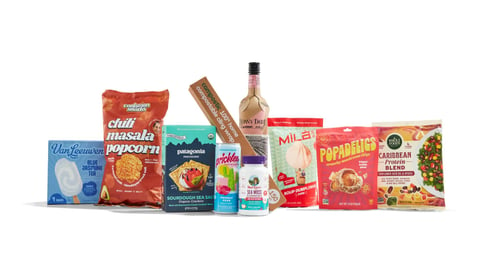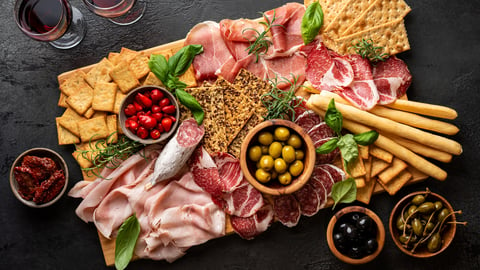Canadians have a growing appetite for global cuisines
More than ever, Canadian consumers can explore the world at their local grocery store. Over the past several years, factors ranging from the pandemic and inflation to immigration and social media have created a perfect storm for culinary adventure and experimentation—and the result is an explosion of global flavours.
“When it comes to flavour, there seems to be this demand for more,” says Jo-Ann McArthur, president at Nourish Food Marketing in Toronto. “Consumers are looking for food to deliver a more intense experience with every bite.”
Canadians have historically looked to restaurants to find this intensity; however, the stay-at-home restrictions of the COVID years and the subsequent rise in grocery prices have led more consumers to go global from their kitchens.
READ: As Canada’s population diversifies, the definition of comfort food is evolving
“During COVID, people weren’t eating out anymore and all of a sudden their cooking abilities went up a couple of notches,” says Gail Castillo, head of insights, North America for AB World Foods, which counts Patak’s Blue Dragon and Tabasco among its brands. “Now that we’re experiencing inflation, we’re still seeing people come down the international aisles to save money on going to restaurants or ordering in.”
Consumers are also getting more and more inspiration from social media, as they look to recreate recipes from Instagram and TikTok. “Trends used to start in fine dining and then come down to quick-service restaurants, but now they’re going crazy because of TikTok,” McArthur says. “We’re finding the trends there before they show up in research and Google trend data.”
The underlying driver, of course, is Canada’s diverse population, which now includes multiple generations of individuals who have more than one ethnic background. As consumers look to incorporate all elements of their identity in the kitchen, traditional culinary boundaries are being shattered.
“People want to incorporate everything they’ve experienced culturally into their food,” says Castillo. “You see it on Instagram posts, people mixing Korean with tacos, or butter chicken on pizza.”
For these reasons, nailing down the hottest thing in global flavours is a little like trying to step on one’s own shadow. But, grocery retailers can count on the following taste trends to be influential heading into 2025.
East and Southeast Asian
The cuisines of Korea, Japan, the Philippines and Thailand are tantalizing consumers with their blends of spice and sweetness and driving 24% growth in the multicultural food category, according to Paul Hogan, general manager for Conagra Brands International.
READ: As consumers embrace global foods, grocers look to diversify their offerings
Conagra aims to satisfy these cravings with a portfolio that includes P.F. Chang’s line of Teriyaki, Sweet Chili, Sesame and Kung Pao sauces, as well as frozen P.F. Chang’s Home Menu products such as the Broccoli & Beef Skillet dinner, Chicken Pad Thai Bowl and Korean-Inspired Pork Bowl. And AB World Foods’ Blue Dragon brand recently launched Spicy Teriyaki Sauce that can be used for grilling, marinating or dipping.
South Asian
Newcomers from South Asia broadly, and India in particular, are driving Canada’s immigration trends. Accordingly, the flavours of the region are influencing products on store shelves.
According to McArthur, a slowdown in innovation from food manufacturers has led private-label brands to fill in gaps in the international food aisle. For example, Farm Boy’s in-house butter chicken and tikka masala sauces, frozen mini samosas and pakoras with tamarind sauce, and canned curry products offer consumers a taste of India. “What we’ve seen is a huge pullback in innovation in CPG,” explains McArthur. “Private label is kind of picking up the slack there.” (Still, products such as Conagra’s VH Butter Chicken Sauce show traditional manufacturers are still in the game.)
Middle Eastern and Mediterranean
Middle Eastern cuisine is the fastest-rising flavour trend in the country, according to McArthur. Frank Jaja, director of category management & ethnic for Metro and Food Basics, is seeing this play out in the popularity of dairy products such as kefir and labneh, spices such as sumac and za’atar, and dates.
Meanwhile, Mediterranean flavours are favourites with consumers. Spyce Girls Theo the Greek Seasoning, for example, can be used as a rub for meats and as a seasoning for vegetables and potatoes.
This article was first published in Canadian Grocer’s November 2024 issue.



